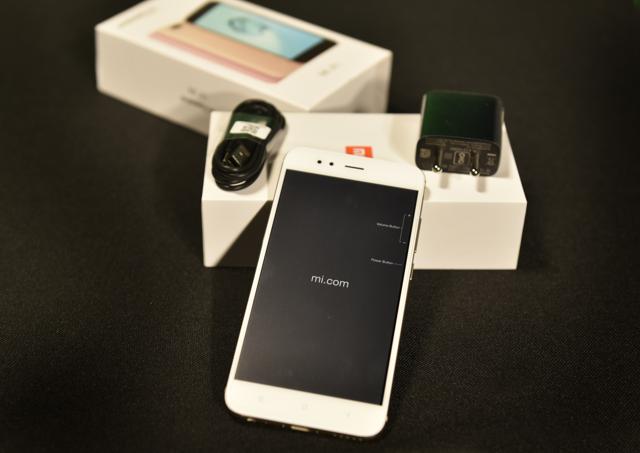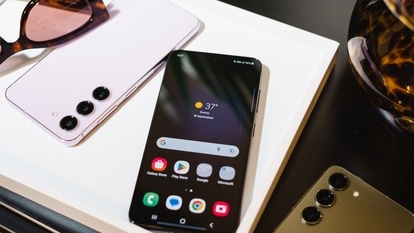Google may have missed the bigger picture with Android One 2.0
Will Google’s shift in strategy for Android One be successful?

Google does not want us to write an obituary for Android One, yet. Launched in 2014, the ambitious programme was aimed at reaching the "next billion" with entry-level devices, with an assurance of Google's security updates and stock Android software experience.
But Android One never took off in India: Before Xiaomi Mi A1, there were only four smartphones available in the country. While Android One had clearly gone on the back-burner for India, Google did sporadically launch Android One smartphones in different markets.
Google is now making a very big change in its strategy for Android One - it is no longer just about entry-level smartphones. At the Xiaomi Mi A1 launch event earlier this week, Google's Jon Gold said: "Android One is no longer restricted to entry-level smartphones." Going forward, Android One will be available on a broader range of smartphones, he added.
"When Android One was launched in India back in 2014, the goal was to get the next billion people online by providing them with high quality, affordable phones. Since then, the users value what Android One stands for across a range of phones—a refreshingly simple software experience that is accessible, always fresh and stays ahead of the curve, with improvements to battery life, usability, and of course, security," said Google in a press release.
To resurrect Android One, Google partnered with Xiaomi, one of the leading brands in the budget segment. But so was Micromax in 2014. The biggest difference between Android One in 2014 and Android One in 2017 is that the smartphone, hardware platform, possess a better set of specifications than the predecessors and is on par with the competition.
Like we mentioned in our first impressions of the Xiaomi Mi A1, the smartphone holds its ground as a good standalone device, regardless of the Android One affiliation. With smartphone brands like Nokia and Lenovo promising regular updates and stock Android experience, our apprehension is that the Android One tag may no longer be a compelling point to sell a device.


Perhaps, Google is once again late with Android One, 2.0. Diverting from the initial plans for Android One may just be a futile step for Google. We still strongly believe Android One for 'billions' is a far better proposition than Android One's current 'for all range smartphones' strategy.
Google should most probably take inspiration from Reliance Jio, which catapulted to the top of the mobile phone and telecom industry with its correct understanding of what 'billions' actually want.
We haven't seen the JioPhone yet, but the idea to give an internet-enabled ultra-affordable smartphone (yes, we called it a smartphone), to lower-tier of the masses is exactly what (Digital) India needs at the moment. After all, didn't Sundar Pichai say that $30 (₹2,000) is the ideal price point for a smartphone for masses? Android One should have worked towards achieving that goal.
At the end of the day, Google is an internet company and relies of a host of services like Google, Google Search, Google Voice and Google Maps to build and expand its base in India. It has already customised its services for the Indian audiences. ALSO READ: 5 times Google customised for India
Let's not forget why Android One failed at the first place. "Android One was launched to target the low-end users in the developing countries. In India Android One devices were initially available online, this affected its sales as these devices were targeted at a large segment of the population unlikely to have access to the internet," Parv Sharma, analyst at Counterpoint Research, told Hindustan Times.
"Devices from other players like Motorola and Xiaomi, which were available online, were offering better specs at low price. Later when it was available offline, the emphasis was not laid on software, which was the USP of the device. As the device had similar spec compared to devices available at that time. And lastly, Google's failure to honour its promise of getting the updates first on Android One phones (remember, the Android Lollipop launch came after much delay in Android One phones) resulted in criticism," he added.
From what we have understood, Google's definition for a broader range of smartphone doesn't mean a premium smartphone. Would a premium Android One smartphone make sense? Of course, not. "Premium Android One smartphone does not make sense as the project was launched to focus on the low-cost smartphones. Moreover, premium Android One will directly confront the Google Pixel strategy," Parv added.
Still, let's not be too pessimistic about Android One. The Xiaomi Mi A1 seems like the right platform for Android One's comeback. But then, sitting on the fence, we are wondering why Google gave up on entry-level smartphones after all!
Catch all the Latest Tech News, Mobile News, Laptop News, Gaming news, Wearables News , How To News, also keep up with us on Whatsapp channel,Twitter, Facebook, Google News, and Instagram. For our latest videos, subscribe to our YouTube channel.


























